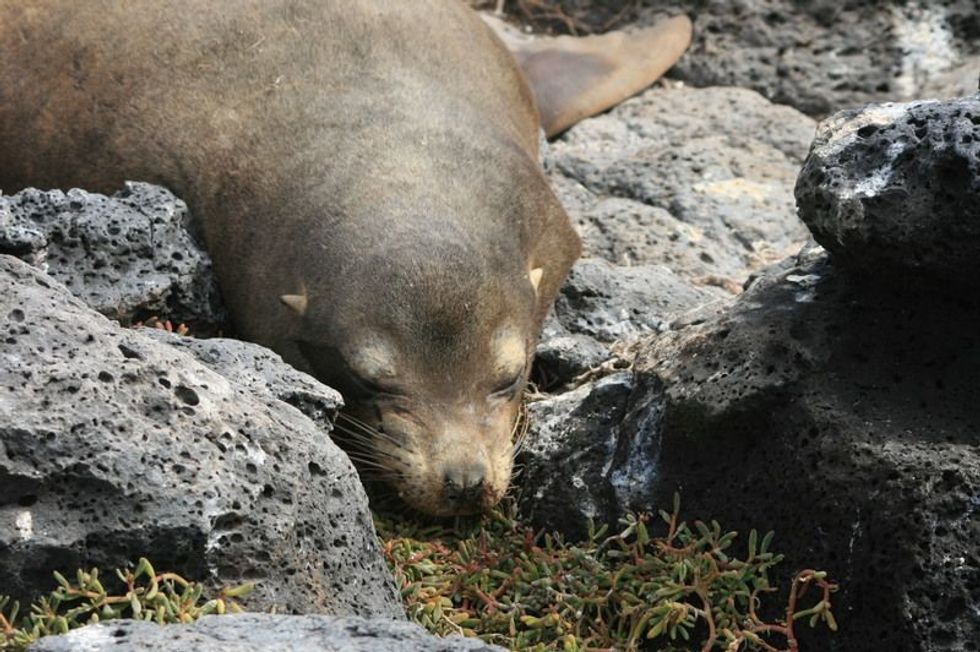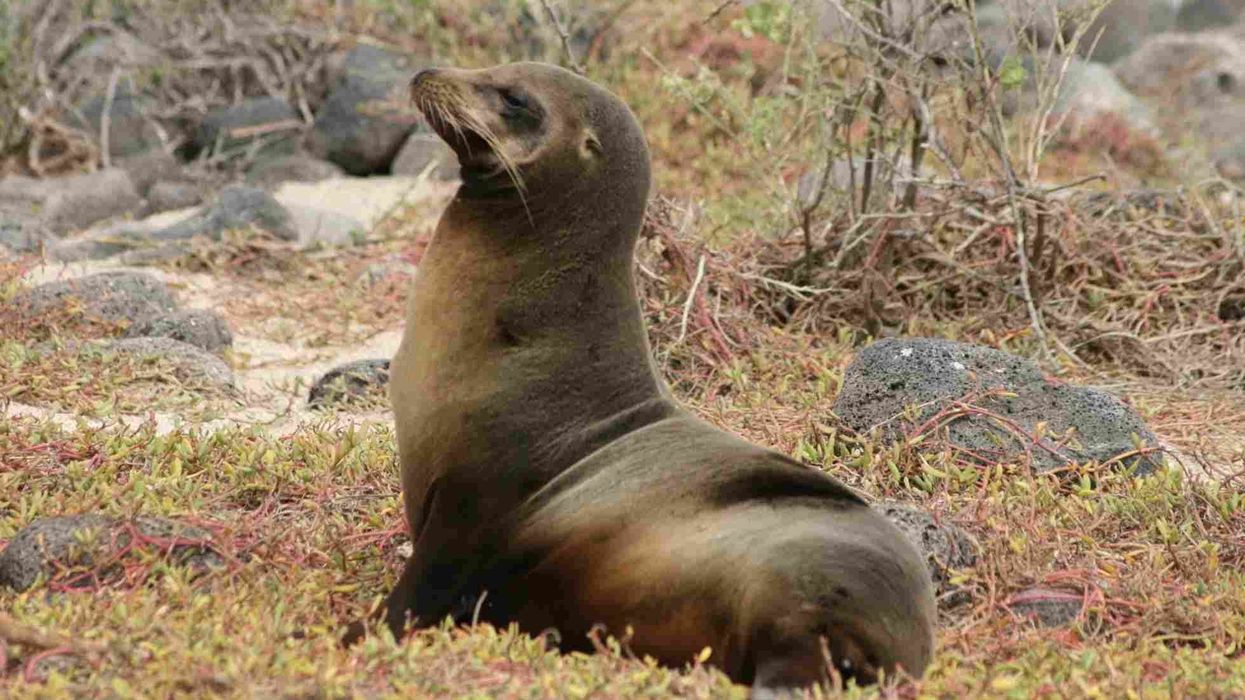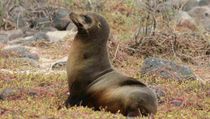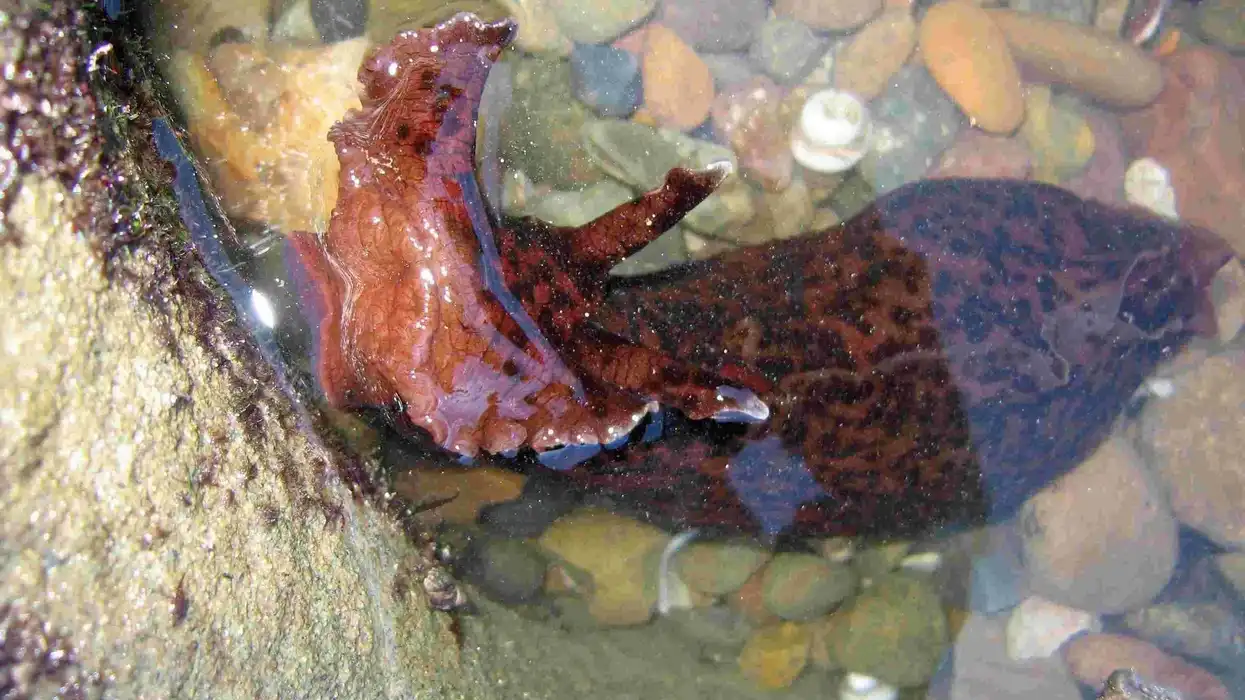Fun Galapagos Fur Seal Facts For Kids
If you are planning on going to the Galapagos islands, make sure you see these adorable sea bears. Galapagos fur seals are entirely native to these islands. Of all the otariids, these are the smallest yet the most adorable ones.
They are not huge fans of the sun, and like the cool shade under cliffs and large boulders. Fish, shellfish, and squid are some of their top favorite meals, and going on a food hunt only in the dark hours. Wondering why? This is because there is less competition from other species, and prey can be easily caught!
Unfortunately, this species is listed as an Endangered one. Various factors such as trafficking, boat collisions, and even water pollution have caused a decline in their population.
For more relatable content, check out these elephant seal facts and Weddell seal facts for kids.
Galapagos Fur Seal Interesting Facts
What type of animal is a Galapagos fur seal?
The Galapagos fur seal is a type of seal.
What class of animal does a Galapagos fur seal belong to?
The Galapagos fur seal (Arctocephalus galapagoensis) belongs to the class of mammals.
How many Galapagos fur seals are there in the world?
Unfortunately, only about 10,000-15,000 individuals of the Galapagos fur seal population are said to be currently surviving. Their population size is said to have a downward trend.
Where does a Galapagos fur seal live?
These fur seals are entirely endemic to the Ecuadorian islands of Galapagos, South America. Though this species has been labeled as a non-migrant one, there have been sightings reported in Guatemala, Peru, and Mexico.
What is a Galapagos seal's habitat?
The Galapagos fur seal habitat is water-centric. They are known to trail along with the Humboldt Current while traversing the Pacific waters. When on land, they love sneaking under large rocky areas, giving them good shade from the sun. Hence, they spend time under ledges, between boulders, or even inside caves. Well, not everyone likes a tan!
Who does a Galapagos fur seal live with?
The Galapagos fur seals live in large colonies of their own kind.
How long does a Galapagos fur seal live?
These mammals of the Galapagos islands are known to have a lifespan of about 22 years.
How do they reproduce?
These mammals are known to live in harmony in large groups called colonies. Now, the male seals of these colonies divide them into separate territories when it is time for the breeding season.
The Galapagos fur seals follow polygonous relationships, with just one male fur seal breeding with about 6-10 female fur seals. The breeding season occurs from August till November, having peak activities in mid-September to mid-October.
Around this time, the temperatures are considerably cooler, and the water is rich in nutrients. The female seals have only one pup each, and each successfully pregnant female would choose her territory by the shore to give birth.
Compared to all the seals, the fur seals of the Galapagos islands are reported to have the least reproductive rates. Also, raising the little pups actually takes a lot of time.
After giving birth, the mother seal would stay with her child only for about a week time before she leaves on a hunt. She keeps returning to her little one every few days, stays with it for a while, and then leaves again on another trip for food.
You might wonder - among the crowd of puppies, how would a mother fur seal recognize her child? Well, the mothers can identify their little babies by sound and smell too. Even the baby seals recognize their mothers by their distinct calls.
The Galapagos fur seals are extremely possessive, and would not nurse any pups that are not their own. Any other pup approaching their territories are harshly sent away.
Hence, the unfortunate seal babies who are orphaned sneak up on sleeping mothers to drink milk, but even this does not help them much, and usually, they pass away within a month’s time.
The little pups are completely dependent on their mother’s milk for about 1.5 years, and thus it takes about two to three years for their weaning. Sometimes, new pups are born when their older siblings are still feeding on the mother’s milk.
Thus, not many pups survive if they have older siblings and the food availability is scarce as well. Especially in the Galapagos Islands, this becomes an even bigger issue.
What is their conservation status?
The conservation status of these fur seals, as listed in the IUCN Red List of Threatened Species, is Endangered.
Galapagos Fur Seal Fun Facts
What does a Galapagos fur seal look like?
Of all the otariids, the Galapagos fur seals are labeled as the smallest. A newborn pup has a black natal fur coat, which slowly changes to a light brown hue as they grow up. The male seals are much larger than the female seals.
The Galapagos fur seal description can begin from its scientific name, Arctocephalus galapagoensis, which actually means ‘the one with a bear head’.
This fur seal has a small pointy muzzle, adorned with a button nose. It's got large, dreamy black eyes, similar to those of bears.
They are actually very similar to the Galapagos sea lions. The only difference between the Galapagos fur seals and sea lions is their fur coat. The fur seals are said to have considerably thicker fur coats, made with long guard hairs.
Their heads are small and broad and have slightly more visible ears than the sea lions. The fur coat may be in shades of brown, or rarely gray.
The guard hairs are light-tipped, giving this species a grizzled look. The males of this species have a mane as well. Their undersides are much paler when compared to the rest of their bodies.
The pups and the female fur seals have a much lighter body color, with a rusty belly and a pale gray chest. Their long flippers are of black hue.

How cute are they?
The Arctocephalus galapagoensis is totally adorable!
How do they communicate?
The Galapagos fur seals are known to make different noises while searching for food in the ocean at night. One of these is a long growl, while the other is a quick snap. These fur seals also communicate with each other visually.
How big is a Galapagos fur seal?
When it comes to the Galapagos fur seal size, the male is bigger than the female. The male fur seal grows up to 5 ft (1.5 m), and the female fur seal grows as long as 4.1 ft (1.25 m) long.
This makes them almost four times the size of a Victorian bulldog.
How fast can a Galapagos fur seal swim?
We do not know the exact speed of this species. However, fur seals are known to reach speeds of about 15 mph (54 kph) while swimming.
How much does a Galapagos fur seal weigh?
At the time of their birth, a female Galápagos fur seal weighs about 7.5 lb (3.4 kg), whereas the male weighs around 8.4 lb (3.8 kg). An average adult male Galapagos fur seal weighs about 140 lb (63.5 kg), whereas the adult female fur seal is much smaller in size, weighing about 60 lb (27.2 kg).
What are the male and female names of the species?
In general, a male fur seal is called a bull, whereas a female fur seal is called a cow.
What would you call a baby Galapagos fur seal?
A baby Galapagos fur seal is called a pup.
What do they eat?
The Galapagos fur seal diet is mainly carnivorous. These seals enjoy a good variety of animals in the ocean.
Fishes, krill, squids, octopuses, mollusks, and even penguins are preyed upon by these animals. Only the fish lurking within 50 ft (15.25 m) of the water surface are fed upon. Around the time of the mating season, the males limit their food intake.
Are they poisonous?
No, the Galapagos fur seal is not poisonous.
Would they make a good pet?
This species is actually too big in size, and also they prefer the Galapagos sea and ocean waters.
Did you know...
Know this - these pups actually are not really friendly and welcoming towards their siblings! With fewer resources, limited milk from their mothers, and the share of attention by the mothers, sibling rivalry is quite often a scene.
The older sibling believes it has full rights over the mother’s love and to drink her milk, but the mother might be preparing for her next pup, and thus might show aggression towards her child.
Whenever the older one wants to get a share of the milk, the mother would interrupt, aggressively pushing away the older one if they harassed the younger pups.
The mothers would drag away the older one by biting on its skin or lifting them roughly. This develops a strong rivalry between the siblings, drinking up enough milk for its satisfaction and leaving little to none for the younger babies.
The female Galápagos fur seal reaches maturity at the age of three to five years, whereas the males mature a little late, around 7-10 years of age.
The main predators of fur seals include orcas and even sharks.
The Galapagos Islands get a lot of sunlight, heating up the entire habitat of the Galapagos fur seals. But these seals possess thick fur coats.
Thus, there are multiple Galapagos fur seal adaptations that help them survive in such scorching heat. The body temperature of these seals must be maintained at about 99.5°F (37.5°C).
Hence, they perform thermoregulation which prevents their bodies from overheating.
The cardiovascular system of these mammals aids in thermoregulation by regulating the amount of blood flowing to the flippers - more blood flows to dispense off the heat on the warm days, and the opposite happens on the cooler days. The mother seals also teach the pups to cool down their bodies under the cliff shadows.
How to tell the difference between the Galapagos sea lion and the Galapagos fur seal
Fur Coat - The fur seals of the Galapagos islands have much thicker fur coats than the sea lions. If you observe these two species closely, you can see that a fur seal has longer guard hairs, in comparison to a sea lion.
Head - Sea lions have pointier faces adorned with pointier noses. On the other hand, fur seals have broader, shorter heads.
Eyes and Ears - The ears of a sea lion are not very visible, however, you can clearly see the tiny ears of a fur seal. Fur seals also have larger, rounder, bulgier eyes than sea lions.
Body Size - A Galapagos sea lion has a larger body when compared to a Galapagos fur seal.
Where To Spot Them - Galapagos fur seals can often be found resting in shady areas, under large rocks, cliffs, or in caves. Sea lions, on the other hand, enjoy basking in the sun.
Are the Galapagos fur seals endangered?
Yes, it is very unfortunate that these mammals are endangered. In the earlier days, these mammals were hunted down.
However, measures have been taken for the Galapagos fur seal conservation. However, ever since the Galapagos Islands have been declared as a national park, these fur seals are well protected under the law. The seal prefers a cooler habitat, but changes in the environment can threaten their population size.
Other major causes affecting their population are oil spills in the waters, tourists trafficking the seals, and even collisions with boats. Oil spills in the surrounding waters of the islands greatly affect these fur seals, as the thick fur coat on their body assists in thermoregulation, and this gets affected.
Here at Kidadl, we have carefully created lots of interesting family-friendly animal facts for everyone to discover! Learn more about some other mammals from our spinner dolphin facts and killer whale facts pages.
You can even enjoy yourself at home by coloring on one of our free printable Galapagos fur seal coloring pages.
We Want Your Photos!
More for You
See All
Doctorate specializing in Veterinary Medicine

Oluniyi AkandeDoctorate specializing in Veterinary Medicine
With an accomplished background as a Veterinarian, SEO content writer, and public speaker, Oluniyi brings a wealth of skills and experience to his work. Holding a Doctor of Veterinary Medicine degree from the University of Ibadan, he provides exceptional consulting services to pet owners, animal farms, and agricultural establishments. Oluniyi's impressive writing career spans over five years, during which he has produced over 5000 high-quality short- and long-form pieces of content. His versatility shines through as he tackles a diverse array of topics, including pets, real estate, sports, games, technology, landscaping, healthcare, cosmetics, personal loans, debt management, construction, and agriculture.
Disclaimer
1) Kidadl is independent and to make our service free to you the reader we are supported by advertising. We hope you love our recommendations for products and services! What we suggest is selected independently by the Kidadl team. If you purchase using the Buy Now button we may earn a small commission. This does not influence our choices. Prices are correct and items are available at the time the article was published but we cannot guarantee that on the time of reading. Please note that Kidadl is a participant in the Amazon Services LLC Associates Program, an affiliate advertising program designed to provide a means for sites to earn advertising fees by advertising and linking to Amazon. We also link to other websites, but are not responsible for their content.
2) At Kidadl, we strive to recommend the very best activities and events. We will always aim to give you accurate information at the date of publication - however, information does change, so it’s important you do your own research, double-check and make the decision that is right for your family. We recognise that not all activities and ideas are appropriate for all children and families or in all circumstances. Our recommended activities are based on age but these are a guide. We recommend that these ideas are used as inspiration, that ideas are undertaken with appropriate adult supervision, and that each adult uses their own discretion and knowledge of their children to consider the safety and suitability. Kidadl cannot accept liability for the execution of these ideas, and parental supervision is advised at all times, as safety is paramount. Anyone using the information provided by Kidadl does so at their own risk and we can not accept liability if things go wrong.
3) Because we are an educational resource, we have quotes and facts about a range of historical and modern figures. We do not endorse the actions of or rhetoric of all the people included in these collections, but we think they are important for growing minds to learn about under the guidance of parents or guardians.







